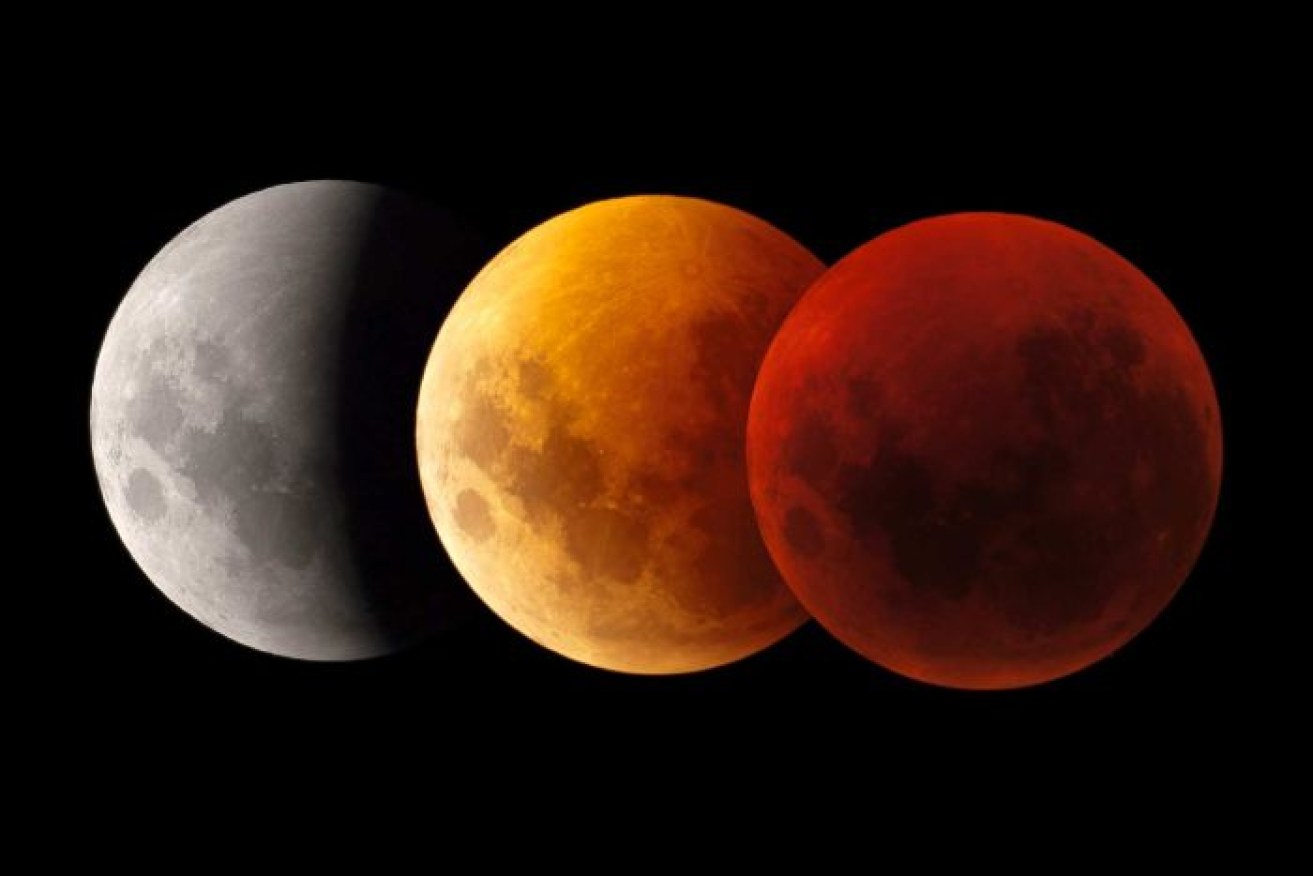Longest lunar eclipse to shine bright red in Australia’s sky


The longest of the 21st century will last 1 hour, 42 minutes and 57 seconds. Photo: Getty
Those brave enough to brace the winter chill in the wee hours will be rewarded with this century’s longest lunar eclipse on Saturday morning.
Weather permitting, the spectacular red moon – also known as a blood moon – will be visible right across Australia, with the penumbral eclipse beginning at 3.14am (AEST) on July 28.
It will be the brightest eclipse in the last 15 years, and the period of totality during this eclipse will be the longest of the 21st century, lasting 1 hour, 42 minutes and 57 seconds.
The red moon eclipse will be seen at 5.30am (AEST) and will be at its greatest at 6.21am.
“You’ll have a red moon and a red planet. It’s a lovely coincidence,” Melbourne Planetarium astronomer Tanya Hill told the ABC.
“It’s quite a long eclipse. You’re only about three minutes short of maximum.”

When to watch the eclipse around Australia. Photo: ABC
Total lunar eclipses happen when the Earth moves between the sun and the moon, completely blocking direct sunlight from reaching the moon.
This time around, the moon will be at apogee, the furthest point in its orbit from the Earth. It will pass through space at a point where the cone of the Earth’s shadow is wider, making the eclipse last longer.
Where you live and your time zone will depend what you see.
The eastern states see the fully eclipsed Moon sitting right on the western horizon, while those in New South Wales, the ACT or Queensland will miss miss out on the final minutes of the total eclipse.
People living in Western Australia will get the best view, seeing the entire total eclipse the Moon come out of the eclipse before it slips below the horizon.
How red will the blood moon be?
Monash University Associate Professor and astronomer Michael Brown told The New Daily he doesn’t expect the blood moon to be as red as it’s being hyped up to be.
He said this lunar eclipse would still be unmissable.
“It’s going to be the last one we’ll see in Australia until 2021, so I wouldn’t miss this event.”

The total lunar eclipse will last for 1 hour and 43 minutes, just 4 minutes short of the longest possible duration. Photo: Getty
Other upcoming must-see sky events
The busy stargazing month of July comes to an end with a spectacular Southern Delta Aquarids meteor shower.
While meteors will be visible every night until August 20, activity will peak on July 29 with as many as 20 meteors per hour that evening.
Mars will be at perigee on July 3. This is the closest and brightest Mars will appear closest to the earth in the night sky for this 26-month period.

The Southern Delta Aquarids meteor shower will peak on July 29. Photo: Getty
So, don’t forget to set your alarm clocks as this is our last opportunity to see a total lunar eclipse until May 2021, although there will be a partial lunar eclipse to look out for in July next year.
The next eclipse to last as long as Saturday’s will occur on June 9, 2123, but it will not be visible from Australia.
-with Suzan Delibasic








